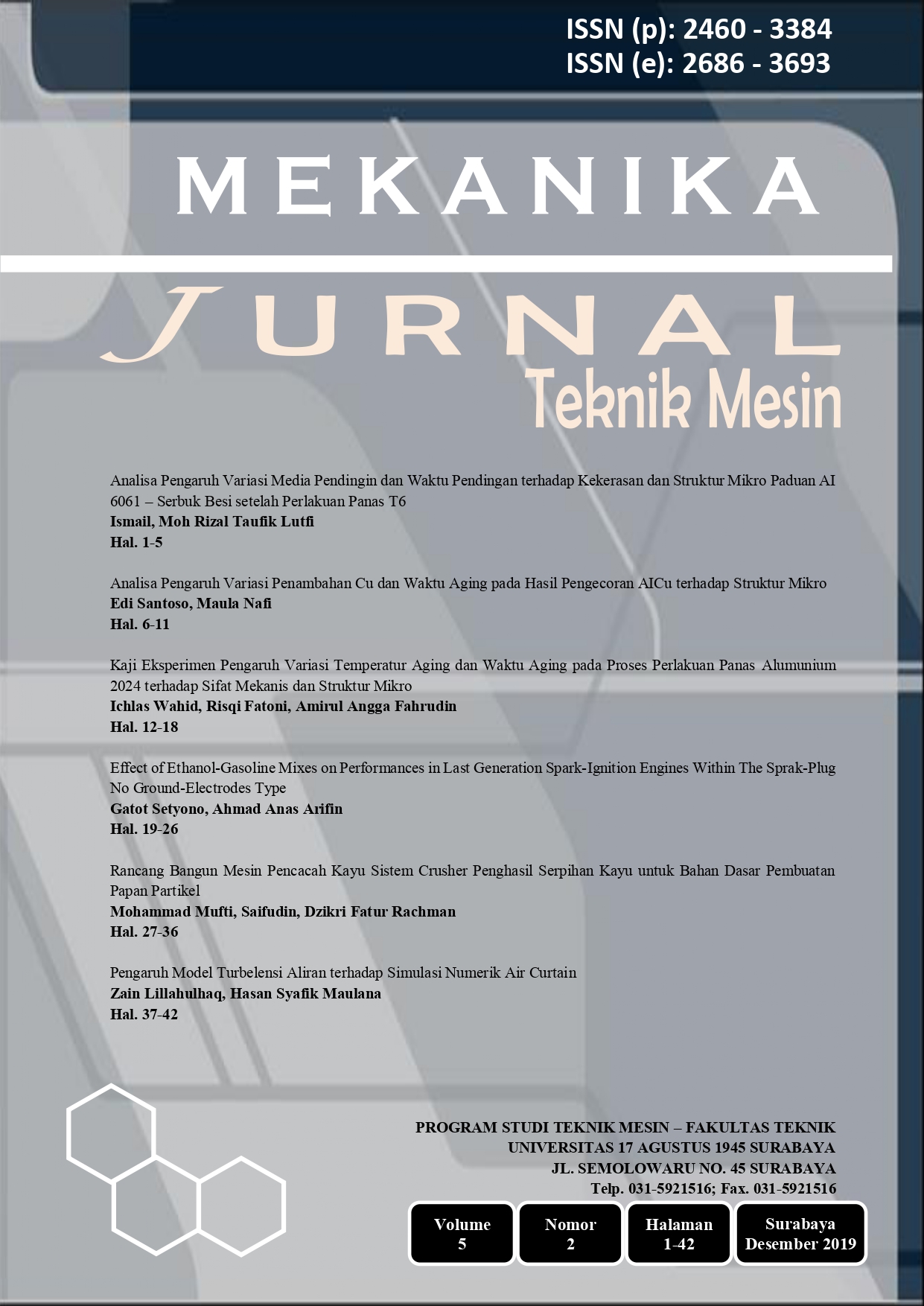Pengaruh Model Turbulensi Aliran Terhadap Simulasi Numerik Aircurtain
Abstract
Aircurtain commonly used in department store enterance, biocabinet, display refrigenerator even in operating room. Turbulance model, which used in air curtain simulation, involve numerical simulation result. This numerical simulation held to study various effect of turbulancy model in air curtain model. The characteristic of fluid flow in aircurtain is being shown in this paper. The 2D simulation of stady state air curtain flow is simulated using compressible fluid. k-? BSL dan Transition k-kl-? is suitable turbulance model which can be used in air curtain simulation.Downloads
References
Atik, Indriyani, ‘Aspek Hukum Personal Guaranty’, p. 27 <https://media.neliti.com> [accessed 1 June 2019]
Cahyani, Dewi Rina, ‘Cetak Rekor, Jokowi Bangun 949 Km Jalan Tol Dalam 4,5 Tahun’ [accessed 3 June 2019]
Fariz, Ghazzan, ‘Prinsip-Prinsip Pemberian Kredit’ <https://catatanmarketing.wordpress.com>
Faturrahman, Djamil, Penyelesaian Pembiayaan Bermasalah Di Bank Syariah (Jakarta: Sinar Grafika, 2010)
Ferry, Fitriadi, ‘Jaminan Atau Agunan Kredit’ <https://www.kreditpedia.net> [accessed 2 June 2019]
Hadisoeprapto Hartono, Pokok-Pokok Hukum Perikatan Dan Hukum Jaminan (Yogyakarta: Liberty, 2004)
Hasanuddin, Rahman, Aspek-Aspek Hukum Pemberian Kredit Perbankan Di Indonesia (Bandung: Citra Aditya Bakti, 1995)
Indrawati, Soewarso, Aspek Hukum Jaminan Kredit (Jakarta: Institut Bankir Indonesia, 2002)
J, Satrio, Hukum Jaminan Hak-Hak Jaminan Pribadi (Bandung: Citra Aditya Bakti, 1996)
‘Kamus Bank Indonesia’
Kamus Besar Bahasa Indonesia, 1989, p. 384
Ramlan, Ginting, Pengaturan Pemberian Kredit Bank Umum, 2005
Riadi Muchlisin, ‘Pengertian, Fungsi, Jenis Dan Penilaian Jaminan’ <https://www.kajianpustaka.com>
Risca, Vilana, ‘Eksistensi LoU Sebagai Jaminan Pembiayaan’ <http://infobanknews.com>
Rivai Veithzal, Islamic Financial Management (Jakarta: Raja Grafindo Persada, 2008)
Sentosa, Sembiring, Hukum Perbankan (Bandung: Mandar Maju, 2000)
Shanti, Rachmadsyah, ‘Kredit Sindikasi’ <https://www.hukumonline.com> [accessed 2 June 2019]
Sitorus, Anisah Adilah Devi Suriati Natalia, Perjanjian Penanggungan Hutang, 2018
Sofwan, Sri Soedewi Masjchoen, Hukum Jaminan Di Indonesia Pokok-Pokok Hukum Jaminan Dan Jaminan Perorangan (Yogyakarta: Liberty, 1980)
Subekti, Jaminan-Jaminan Untuk Pemberian Kredit Menurut Hukum Indonesia (Citra Aditya Bakti, 1996)
‘Universitas Sumatera Utara’ <http://repository.usu.ac.id> [accessed 3 June 2019]
Usman, Rachmadi, Aspek-Aspek Hukum Perbankan Di Indonesia (Jakarta: Gramedia Pustaka Utama, 2003)
Downloads
Published
Issue
Section
License
Mekanika : Jurnal Teknik Mesin allows readers to read, download, copy, distribute, print, search, or link to the full texts of its articles and allow readers to use them for any other lawful purpose. The journal allows the author(s) to hold the copyright without restrictions. Finally, the journal allows the author(s) to retain publishing rights without restrictions










